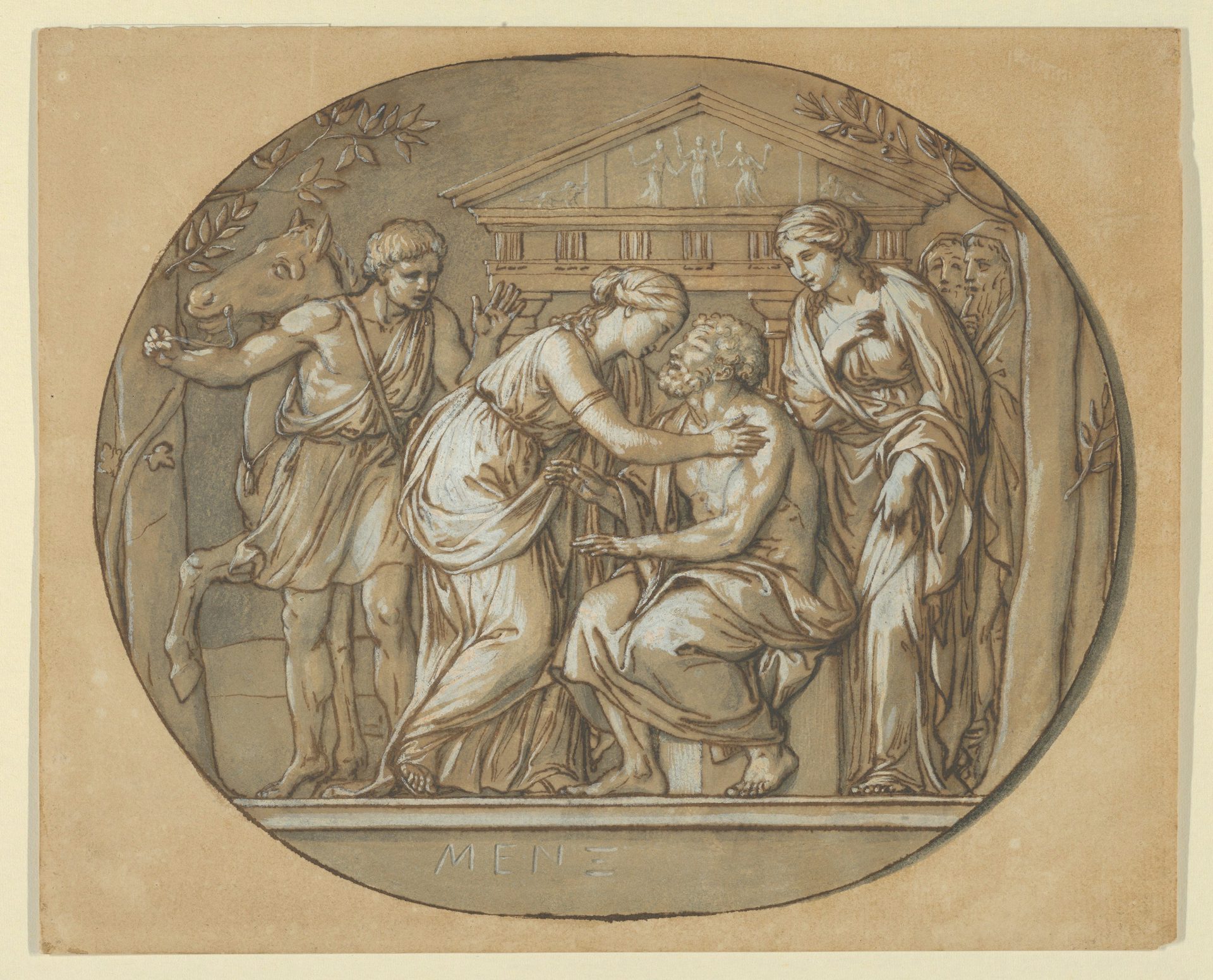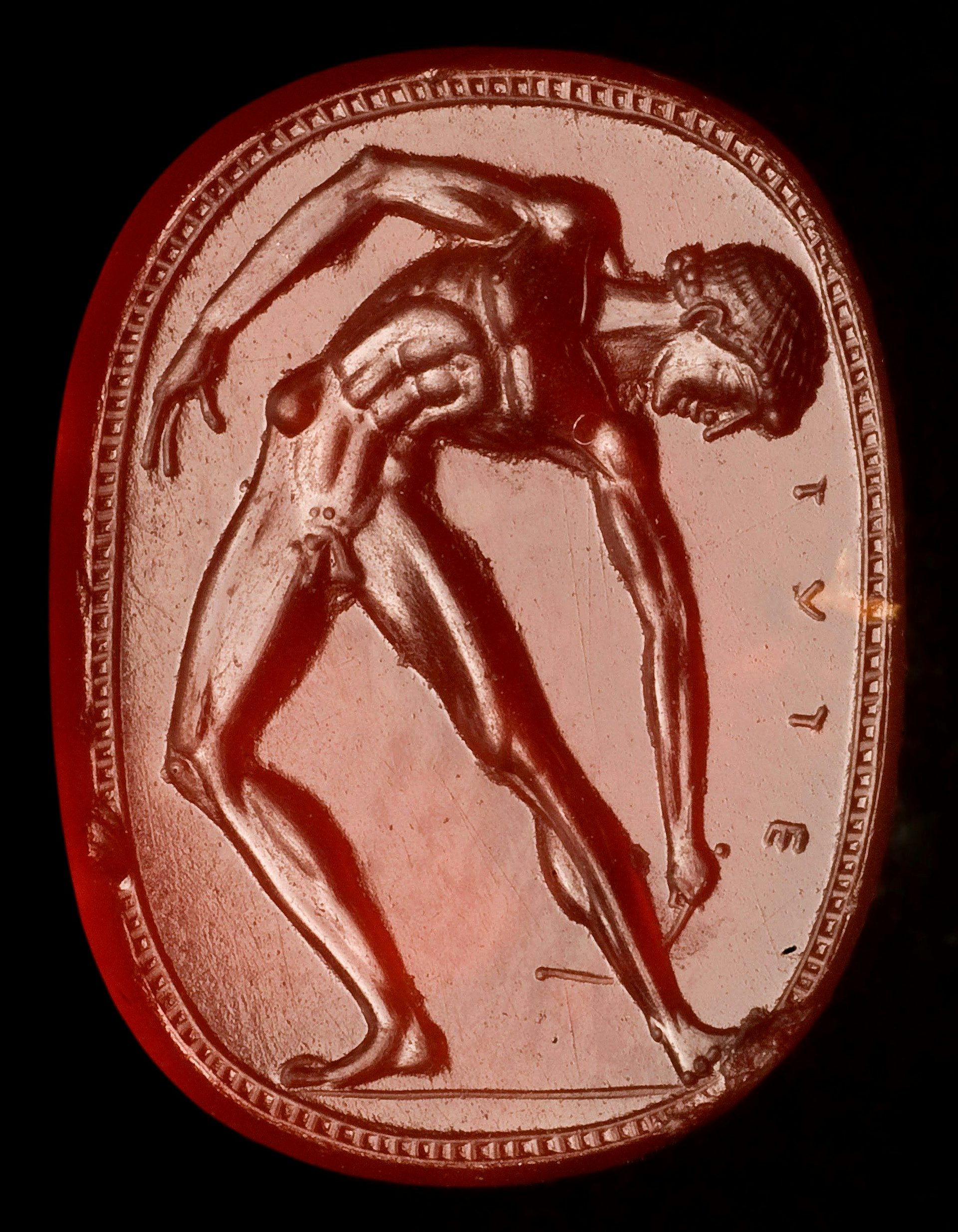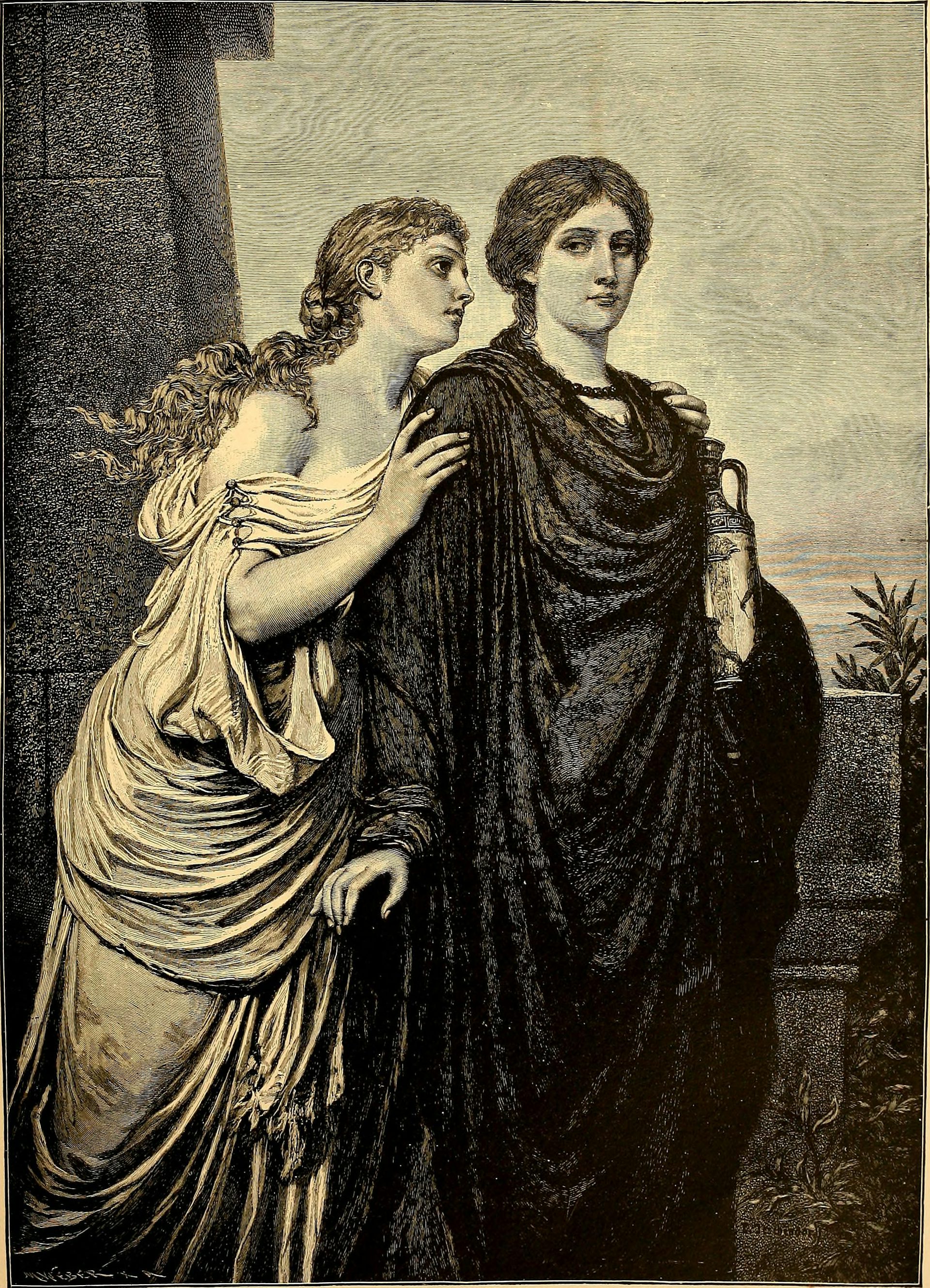Ismene

Ismene and Antigone Plead with Theseus by Nicolai Abildgaard (between 1790 and 1799)
Statens Museum for Kunst, Copenhagen, DenmarkPublic DomainOverview
Ismene was a princess of Thebes, one of the children born from Oedipus’ incestuous marriage to his mother Jocasta. Her siblings were Antigone, Eteocles, and Polynices.
In one early myth, Ismene was killed by the Calydonian hero Tydeus at the instigation of Athena; this was punishment for taking Periclymenus (or Theoclymenus) as her lover. But in her best-known myth, Ismene tried to dissuade Antigone from defying their uncle Creon by burying Polynices, who had been killed while invading Thebes.
Who were Ismene’s parents?
Ismene was one of the children of Oedipus and his wife/mother Jocasta, whom he had married without realizing that she was his mother. Ismene was thus the sister of Antigone, Eteocles, and Polynices.
There was an alternative tradition, however, in which Ismene’s mother was not Jocasta but rather a woman named Euryganeia.

Oedipus Before the Temple of the Furies Between his Daughters Antigone and Ismene by Anton Raphael Mengs (ca. 1760–1761)
The Metropolitan Museum of ArtPublic DomainHow did Ismene die?
In Sophocles’ tragedy Antigone, Ismene outlives her sister, who is executed for defying their uncle Creon, though other sources had Ismene die together with her sister.
In a very different tradition, known from the poetry of Mimnermus, Ismene was killed by the Argive hero Tydeus. Guided by Athena, Tydeus found Ismene while she was meeting with her lover Periclymenus, killing her in spite of her pleas.

Gem engraved with Tydeus with a strigil (500–475 BCE)
Antikensammlung, BerlinPublic DomainIsmene and Antigone
Sophocles’ Antigone recounts the tale of how Antigone tried to convince Ismene to help bury their brother Polynices, who had died while leading an invasion against Thebes. Since Polynices was a traitor, the new regent, Creon—the girls’ uncle—forbade this burial.
Ismene warned her sister of the dangers of defying Creon, begging her not to go through with her plan—but to no avail. Antigone, reproaching Ismene for her lack of courage, buried Polynices’ body herself and was caught. When Ismene tried to take the blame for Antigone’s act, Antigone rejected her help and insisted on dying alone.

Illustration of Antigone and Ismene (1892)
Flickr CommonsPublic Domain